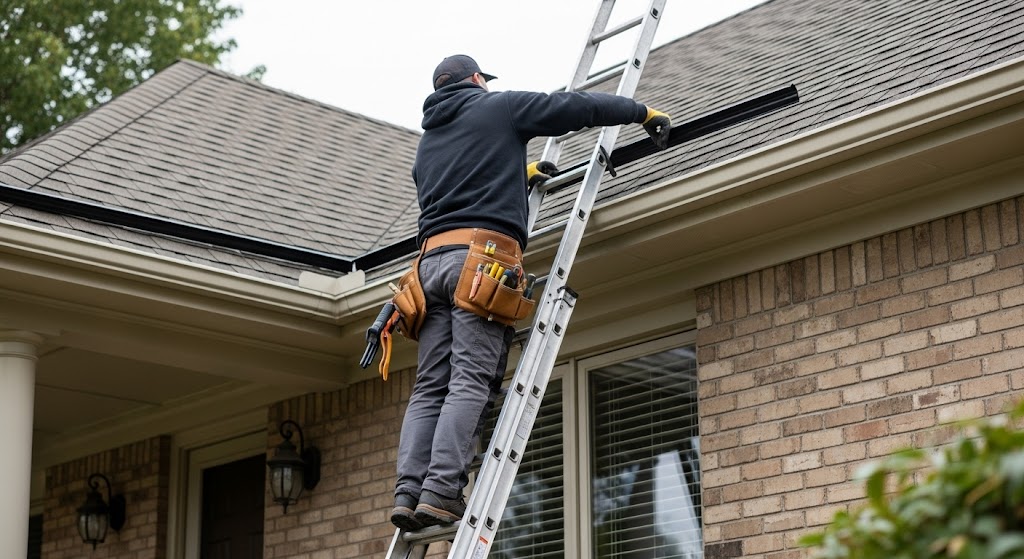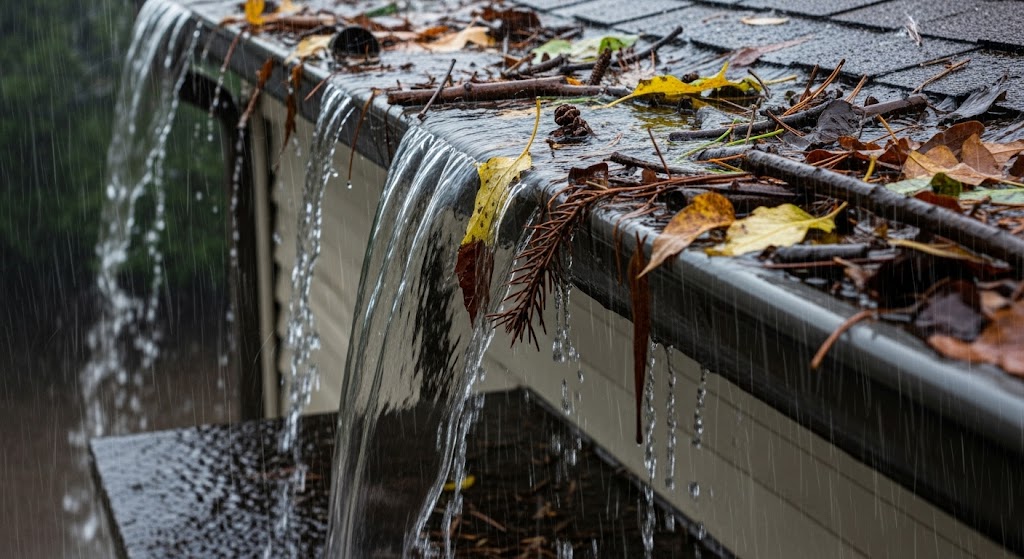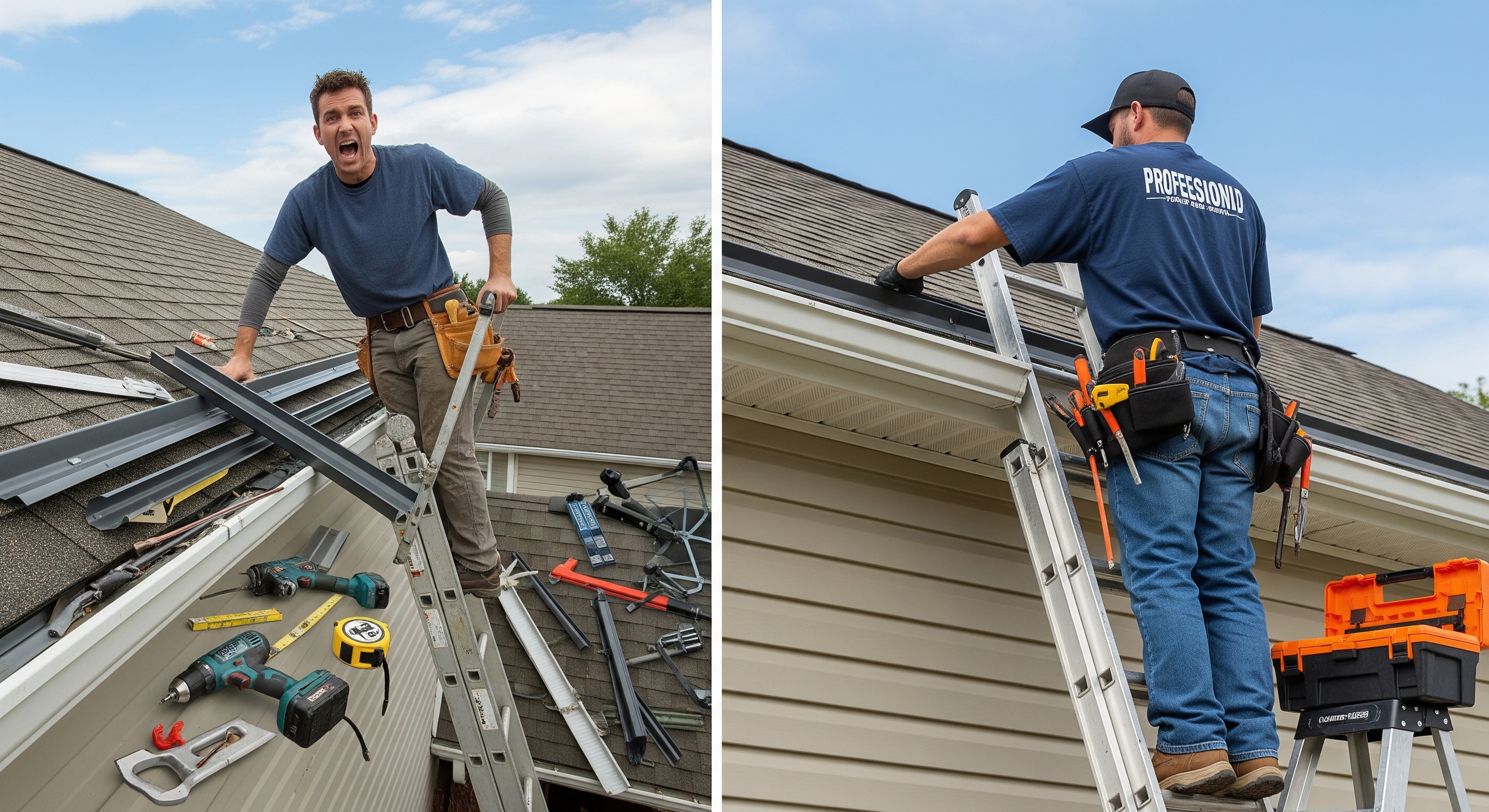
Why Foam Gutter Guards Fail: Common Issues & Smarter Alternatives

Foam gutter guards promise a do-it-yourself solution to clogged gutters, but homeowners often find that the inexpensive material comes with a hidden price. Despite easy installation and low upfront costs, foam inserts tend to underperform when it comes to longevity, debris resistance, and water flow management. In this article, the core reasons why foam gutter guards fail will be examined, and smarter, more durable alternatives will be presented in a clear, professional tone that any homeowner can understand.
The Fundamental Flaws of Foam Inserts
Foam gutter guards are typically made from porous polyether or polyurethane foam shaped to slide into the gutter channel. Initially they block leaves and twigs, yet several intrinsic properties lead to premature failure.
Foam Inserts Clogging
Tiny pores in foam quickly become clogged with organic matter such as pine needles, seed husks, and roof grit. As these fine particles accumulate, water infiltration slows and rainwater spills over the gutter edges. During extended dry periods, dust and pollen cake onto the foam surface, further restricting flow. Homeowners often notice overflow even in light showers once the foam starts to pack with debris.
Limited Lifespan and Degradation
Unlike metal screens or stainless-steel meshes designed to weather for decades, foam inserts lose shape and rigidity after just a few years. UV exposure causes cracking and brittleness, while repeated cleaning trips up the ladder compress the foam structure. In frost-prone regions, freezing temperatures cause ice to form inside the foam cells, leading to expansion, fragmentation, and accelerated breakdown.
Maintenance Challenges
Cleaning foam guards requires full removal from the gutter, a task that can double maintenance time compared to other guard options. Once the foam is extracted, each piece must be rinsed or scrubbed, then allowed to dry before re-installation. Many homeowners skip this thorough cleaning step and end up discarding the old foam, driving up long-term costs under the guise of a budget solution.
Between regular inspections of debris buildup and exploring superior guard materials, every homeowner can find a system that truly reduces maintenance efforts. For a deeper look at holistic strategies, see our guide to best gutter protection.
Real-World Case Studies
In one three-year survey of suburban homes with overhanging oak trees, 80% of foam guard installations required replacement or complete removal by year four due to chronic clogging issues and material degradation. Conversely, properties upgraded to micro-mesh guards reported uninterrupted flow through storms exceeding two inches per hour, with no recorded overflow incidents.
Comparative Analysis of Common Guard Types
Homeowners evaluating options will weigh durability, maintenance frequency, and cost. The following table contrasts foam inserts against two leading alternatives. For a deeper look at how various systems perform across different debris types and roof profiles, visit our overview of the 5 main types of gutter guards.
Smarter Alternatives to Foam Guards
Switching from foam guards to more robust systems can save both time and money. Two standout options are micro-mesh screens and hooded covers.
Micro-Mesh Gutter Covers
Constructed from stainless steel or aluminum with ultra-fine perforations, micro-mesh guards excel at blocking even the smallest debris—shingle grit and moss spores—while allowing heavy rainfall to channel unimpeded into the gutter trough. Their powder-coated frames resist rust, and professional installations seal under shingles without voiding roof warranties.
Hooded vs Mesh Gutter Guards
A systematic comparison of reverse-curve (hooded) and micro-mesh solutions reveals that mesh products outperform in high-debris environments, whereas hooded guards can be simpler to retrofit on existing gutters. For a detailed breakdown, explore Hooded vs Mesh Gutter Guards.
Perforated Aluminum Guards
Perforated aluminum guards offer a balance of durability and water capacity. The broader openings permit rapid drainage, minimizing overflow risk, while specialized edge seals prevent shingle granule intrusion. Lightweight yet sturdy, these guards install directly onto the fascia and maintain functionality through decades of weather cycles.
When someone is ready to move beyond temporary fixes, learning about an advanced protection portfolio can make a world of difference. Check our company profile at home defender usa to see how integrated systems outperform foam.
Implementation Best Practices
Transitioning from foam to a long-term solution should follow a step-by-step approach:
- Complete gutter cleaning to remove settled debris and verify proper pitch.
- Inspection of fascia and hangers for rot or warping.
- Selection of guard material based on local foliage, rainfall intensity, and roof type.
- Professional installation to maintain shingle integrity and guard warranty.
- Scheduled inspections post-installation, ideally before and after peak foliage seasons.
For an overview of our company mission and credentials, visit About us.
Ready to upgrade or need expert assistance arranging an evaluation? Reach out via our Contact us page.
Frequently Asked Questions
Why do foam gutter guards pack with debris so quickly?
Foam’s cellular structure traps tiny particles pine needles, seed pods, and dust—which then compact under pressure, blocking water pathways.
Can foam guards damage gutters?
Yes. Water pooling in clogged foam increases weight on the gutter trough and fascia, leading to sagging and eventual detachment.
Are there climates where foam guards might still work?
In arid regions with minimal tree cover and low rainfall intensity, foam inserts may provide short-term relief but still require biannual maintenance.
What makes micro-mesh different from standard screens?
Micro-mesh features much finer perforations and is often backed with stainless steel powder coating, preventing rust and resisting UV degradation far better than simple vinyl screens.
How does a homeowner decide between hooded and mesh guards?
Mesh guards excel in heavy-debris zones, while hooded variants can be simpler to install and maintain in areas with moderate rainfall and larger leaf litter.
Foam gutter guards can appear cost-effective, but their short lifespan, clogging tendencies, and maintenance demands often outweigh savings. By choosing robust alternatives such as micro-mesh, hooded covers, or perforated aluminum guards, homeowners secure their investment in a clog-free gutter system. At the end of the day, functional rainwater management protects the home’s foundation, landscape, and overall structural integrity.
This professional guidance and comprehensive service are provided by home defender USA, ensuring that every roofline is safeguarded with the utmost reliability.















.jpg)










